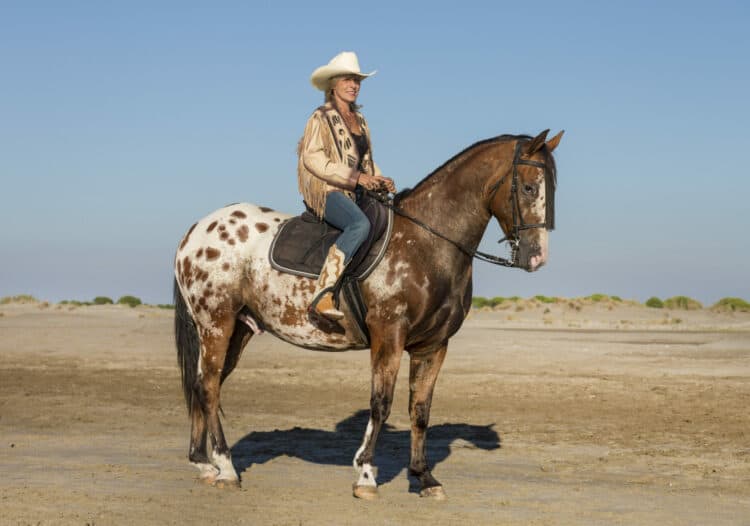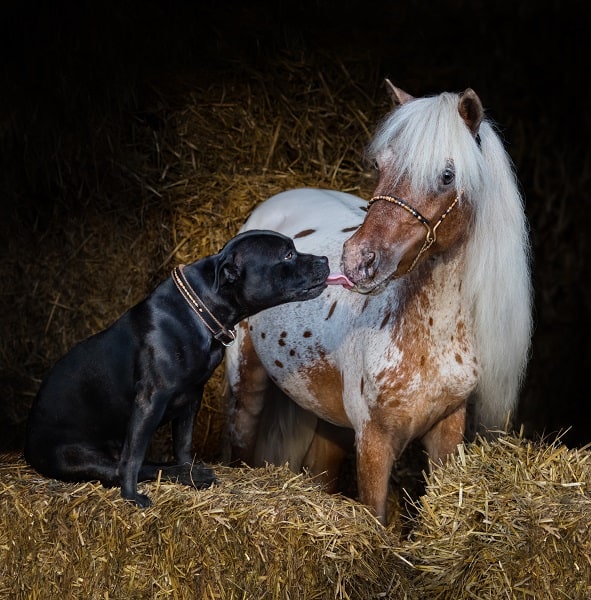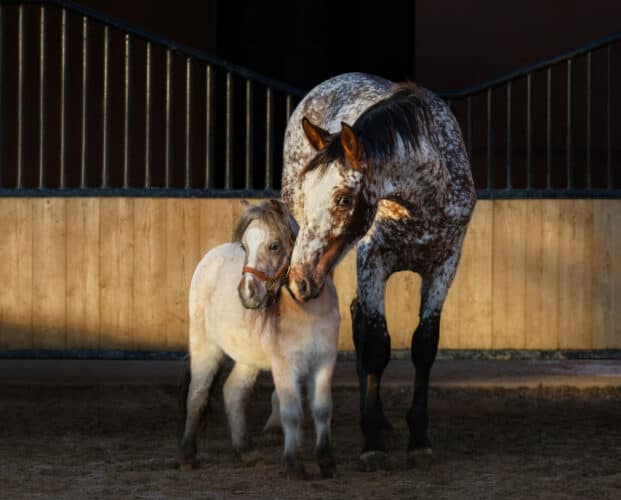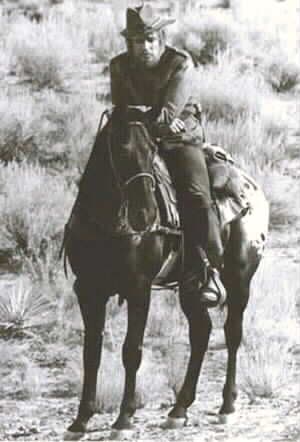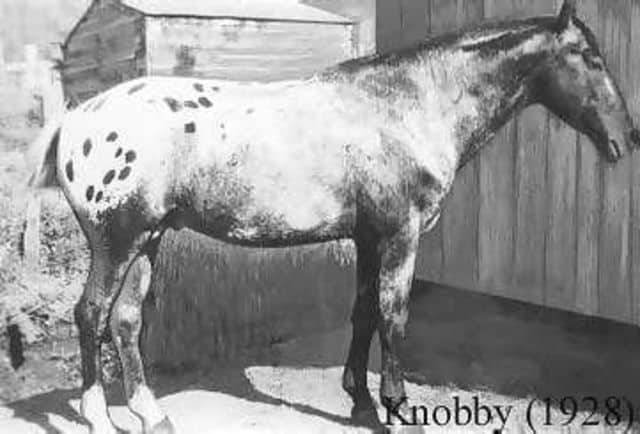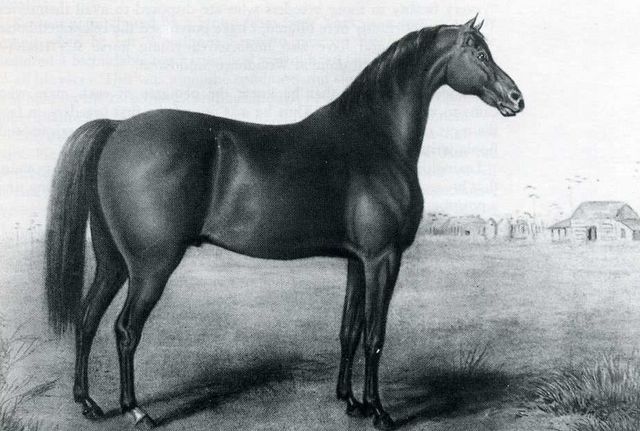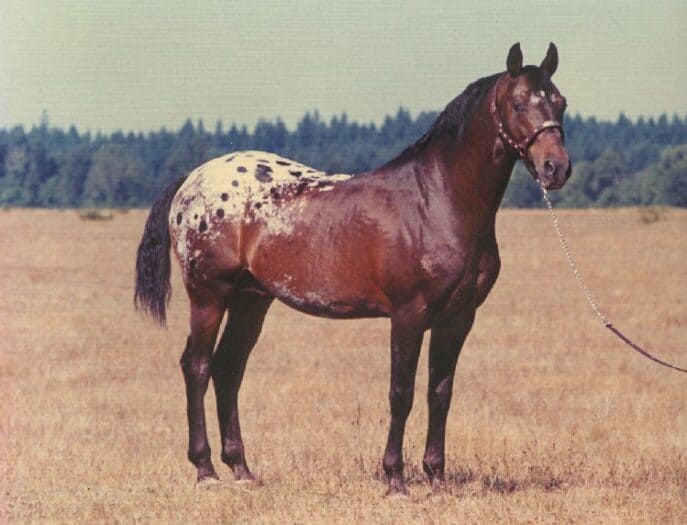- How Much Does a Bale of Hay Cost - August 15, 2023
- What is a Grade Horse: A Comprehensive Guide on Unknown Creatures of the Equestrian World - August 1, 2023
- Best Barrell Saddles - July 31, 2023
- Here Are Some Quick Facts About the Appaloosa
- Appaloosa Horse Overview
- Appaloosa Ancestry
- How to Identify an Appaloosa
- Appaloosa Lifespan:
- Appaloosa Appearance and Varieties
- Appaloosa Human Interactions and Training:
- How to Care for an Appaloosa
- Appaloosa Diet:
- Appaloosa Cost:
- Cost of Care and Nourishment of an Appaloosa Horse:
- Where to Buy an Appaloosa
- Celebrity and Famous Appaloosas:
- FAQs
Hello equestrian lover. This is Boo Ali Khan with another guide on one of the most loveable creatures to walk on the planet earth: the Appaloosa Horse.
Have you ever wondered what marked the development of human civilization? Since the beginning, humans are spread to the far-flung corners of the earth. And because of modes of transportation, mankind has been able to connect with this vastly spread diaspora. And this was facilitated by animals, primarily horses. Not to mention, horses remained men’s best friends before dogs came along.
But horses have many breeds as well. Some are staunch and better for running in the pastures, while others are more suitable as being employed for farm work. The Appaloosa breed is versatile in terms of its uses. From the prehistoric era till the renaissance, its feats remained the sight of every battle. While today, it is a viable option for racing and rodeo events.
Here Are Some Quick Facts About the Appaloosa
Horse Family: Equidae
Horse Breed: Warmblood
Common Names:
- Palouse Horse
- Apalouse Horse
- Appalucy Horse
- Opelousa Horse.
Country of Origin: North America
Height: 56 to 64 inches
Weight: 950 to 1250 pounds.
Color: Variable. Mostly found with colored dots around the body known as leopard-complex.
Coat Quality: Spotted coat pattern
Body Hair: The manes and tails of some Appaloosas are sparse, but most have fully developed ones.
Temperament: Variable.
Lifespan: About 30 years
Purpose: Battles, carrying carriage, racing, rodeo events, derby events.
The following guide will help you delve deeper into this Spotted Horse and will let you know everything there is about the Appaloosa horse:
Appaloosa Horse Overview
The Appaloosa has been surmised to originate in North America. It is believed that the wild Mustang was the direct ancestor of the Appaloosa. The horse is famous for its leopard spots. The height varies, but roughly it is in the range of 56 to 64 inches. Appaloosas have a higher than the standard weight, around 950 to 1250 pounds. The Appaloosa Horse Club was founded in 1938 to preserve a specific standard for breeding Appaloosas.
Appaloosa Ancestry
Appaloosa is a breed of horses that have been tamed by the Nez Perce Indian territory in North America. The mentioned tribe lived around modern-day northeastern Oregon and southeastern Washington. The Spanish Horses brought in by the colonialists and explorers in South America influenced the wild Mustangs, the direct ancestor of the Appaloosa Horse.
The Nez people got a hold of horses around the year 1730. Because of their location, they managed to develop strict breeding practices. Due to this, they bred the best Appaloosa horses, which were active, durable, and intelligent.
How to Identify an Appaloosa
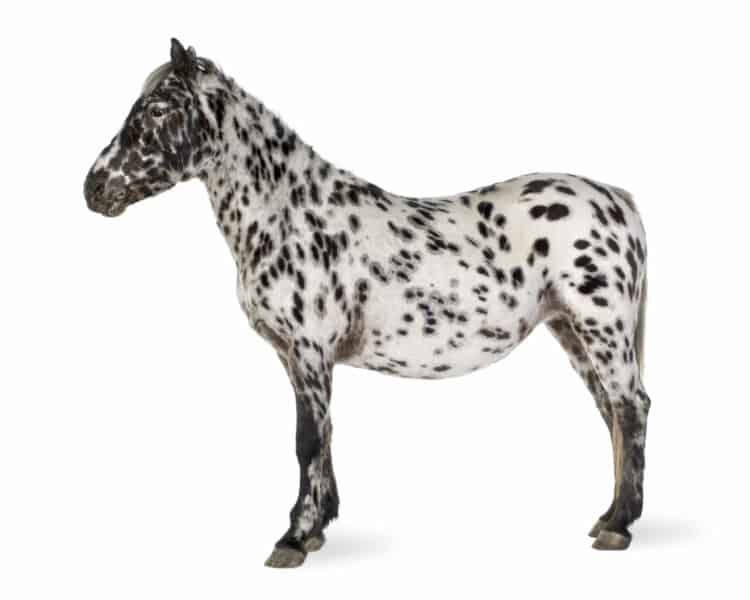
Color Marking:
Usually, the Appaloosa has the base colors of bay black, roan, gray, dun, palomino, buckskin, and grulla. On their skin, there is a color pattern of numerous variations. There is no general rule as to how they would appear, and they are only there because of a specific gene in the horse.
The dominant allele, known as the LP gene, is usually responsible for these patches. The leopard complex is the name given to the variable pattern. Around them, there is a light silhouette of the fading mark.
Body type:
The body type of the Appaloosa horse is standard. They have a higher-than-average weight, making them somewhat bulkier than the average horse. The weight accounts for its robustness for carrying around persons or carriage. As far as the height is concerned, Appaloosa is diverse due to many horse breeds that influence its ancestry. But generally, they are around the average of other horses, ranging about five feet.
Breeding Standards:
Since 1938, the Appaloosa Horse Club has established numerous breed standards for the Appaloosa horse. Generally, Appaloosa is to have a symmetrical appearance. The limbs and shoulders of the Appaloosa are well-defined that slope into their deep chests.
The Appaloosa’s forelegs should have a perpendicular line from the shoulder to the middle of the knee and foot. On the other hand, the rear legs have an orthogonal line from the hindquarter that falls on the center of the hock, pastern, and foot.
Particolored skin surrounding the nostrils, mouth, eyes, anus, and genitals are secondary traits. Their sclera may be white, and dark and light stripes on the hoof wall are possible. At least one foot may have striation if a striation gene is present.
Appaloosa Lifespan:
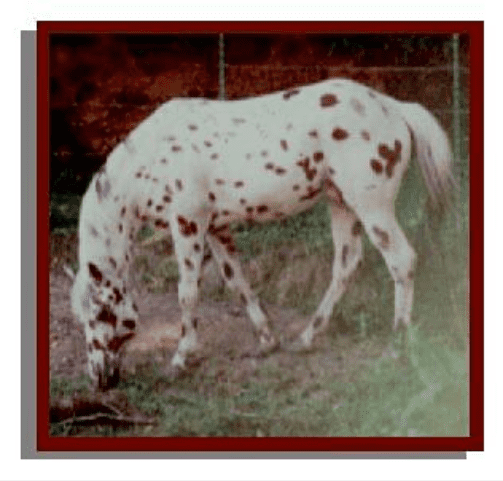
The general lifespan of the Appaloosa horse is around 30 years. But many factors can influence this number. Relatively speaking, Appaloosa lives longer than an average horse. The oldest Appaloosa seems to be Kemo’s Fire Shadow, registered with the code 341774, and its age is around 39.
Although no one has control over life, one can do their best to make the conditions favorable for their horse. The following are the factors to elongate the lifespan of the Appaloosa:
1. Diet:
A good diet can exorbitantly help the lifespan of any horse. An Appaloosa has a long digestive system, so it spends a great time eating. Hay, along with water, is the most common diet for these horses.
2. Diseases:
Appaloosas were bred specially for their impressive immunity. But there are certain diseases that an Appaloosa can face due to its genetics or some contingent environmental conditions.
The most common genetic ailment is the Congenital Stationary Night Blindness (CSNB). It hinders the Appaloosa from seeing in the dark. Other diseases include skin problems involving blotches and withered hair. But their chances can be diminished with daily sunblock.
3. Good Care:
Like all other horses, if the Appaloosa Horse is cared for correctly, that will play a crucial role in its long-term health. Generally, the horse’s health is related to its coat.
Appaloosa Appearance and Varieties
The Appaloosa Horse is a result of the breeding of distinct horses, meaning that there is a wide range of variations in each horse. The standing out characteristic of the Appaloosa is the leopard-complex spots on its skin. They have a specific allele, termed LP, which dominates, showing these marks. In addition to these characteristics, most have mottled skin, white sclera around the pupil, and striped hooves.
Some Notable Differences in Appearance
Generally, the Appaloosa has two color coats to differentiate from. One is the base coat color, and the other is the color of the spots. These marks’ patterns can also be used, but they change over the Appaloosa’s life; thus, they should only be used as a secondary identifier.
The base coat color may be one or two. For example, the Appaloosa’s head and neck can be brown, while the rest of its body is white. This may include dilutes, roans, and other modifying types. The color of the iris may be blue, hazel, green, black, or others. As far as the coating pattern is concerned, variation is seen here too. An appaloosa may have no spots or has some spots only on one side of the body.
Different Varieties of Appaloosa Based on Their Color Pattern:
Like humans, the Appaloosa is a diverse creature. It is said that no two Appaloosa look absolutely identical. And this is what makes these horses very dear to me. However, the Appaloosa Horse Club has still attempted to categorize Appaloosa into nine types based on the pattern of their color coats. These are:
- Spots, where the marks are on some part or on the whole body.
- Leopard, where a single base color has stains over every portion.
- Snowcap, where the horse is all white except for the hip.
- Spot Blanket, where the horse is entirely white with dark spots except for the hip.
- Few-spot leopard, where the horse is all white except for a pattern around the neck.
- Snowflake, where the Appaloosa has a dark base color with white spots.
- Roan or varnish roan, which is a classification of the leopard complex
- Roan blanket, where the roan is around the hips. This may be extended from the hips.
- Roan blanket with spots, where the roan has white or dark spots.
- Mottled, where a leopard complex has some such skin.
Appaloosa Human Interactions and Training:
Appaloosas are generally well-tempered animals that can be utilized for various purposes. Appaloosas are very intelligent. By instinct, they understand how to perceive certain obstacles. So when they feel like they are receiving unclear signals from the rider, they may become disobedient.
This behavior is not hostile, but rather they act through passive aggressiveness. Usually, it is done by doing the opposite of what the rider is asking them to do, as what they are being cued feels utterly wrong to them.
However, there is a solution in reverse psychology that works wonders on an Appaloosa. If it is doing the opposite of what you are telling it, signal the opposite of what you want! Nevertheless, it is to be kept in mind that the Appaloosa should not be forced to do anything.
They are proud creatures, descendants of the wild Mustangs, and you have to earn their respect to gain fidelity. You may have to begin with giving in to what it wants, but this is the way forward to gaining its trust.
But stubbornness might not be the only issue you might face with an Appaloosa. Sometimes, they might annoy an owner to obtain what they want. This may be overturning, loafing around, moving slowly, etc. One way is to use the item they want as an incentive to discipline the horses, like using a dangling carrot in front of them. I sometimes think the expression ‘carrot and stick’ might be coined by the Appaloosa.
With this being said, every Appaloosa is different. Those raised from a fowl are more prone to be obedient to their long-term owners. Older horses do not like it when they see new faces. But with the right strategies, even they can be trained.
How to Care for an Appaloosa
This Appaloosa requires a moderate amount of care and makes a worthy grazing horse. They need a similar degree of consideration as any different horses. They favor the opportunity to go about and associate with their species.
For disposing of rottenness, dirt, and tangles, it is prescribed to clean week by week. Brushing your horse’s jacket regularly, assuming it’s for the most part white, could assist it with putting its best self forward. Utilizing a shampoo can likewise help. The shampoo not only removes the dirt but also calms them.
But Appaloosa is also prone to diseases due to their specific gene structure. One is night blindness. In some studies, leopard spotting and night blindness are revealed to have a direct relation. If they develop such ocular diseases, they may be confused or not move towards dark areas. The best approach would be to work such horses in the daytime. Fortunately, Appaloosas do adjust to this quickly enough.
Another eye problem that the Appaloosa might face is excessive watering. This is known as moon blindness. About 2-25% of the horses globally are affected by this disease. But the Appaloosas are eight times more likely to develop this. In this autoimmune disease, the uveal tract of the eye is inflamed. Symptoms include puffy, watery orbital region, or squinting.
The inflammation in the eyes is reduced through medicine, such as NSAIDs, mydriatics, and corticosteroids. Fly masks are the traditional protective measure. Finally, there is the issue of sunburn in pink-skinned Appaloosas. Sunblock is advised to be applied to areas where they develop the burns. Keeping them inside the shade is also recommended during hot summer days.
Appaloosa Diet:
An Appaloosa requires a general horse diet. Horses have a unique digestive tract that consumes a lot of high-fiber material. They also eat consistently throughout the day in short meals. Generally, fresh grass, quality hay, grains, high-fiber fruits, and vegetables are edible for Appaloosas. In case of a deficiency, vitamin and mineral supplements might be required, particularly for horses not allowed to graze freely. These supplements are usually given in the summer.
They consume approximately five to ten gallons of water per day. But the amount of water consumption also depends on what food they are eating. For example, pasture grass eaters require less water, and those feeding on hay drink more.
It is to be kept in mind that grains should not be given to foals since a high-calorie diet could cause bone and joint issues. Change their eating regimen steadily, as sudden changes could cause stomach uneasiness or even cause a condition where the foot bone isolates from the foot divider.
Appaloosa Cost:
Now, this might be the portion the readers were waiting for. Costs vary for Appaloosa at different stages in their life. The younger horses, foals, are cheaper. But their grooming is difficult. It is pertinent to mention that gender also plays a role. On average, the price of the Appaloosa ranges between $1000 and $10,000. Here is the categorization for Appaloosa horses in terms of value:
Baby Appaloosa Horses
The horses that are under one year old are known as foals. The minimum price for a baby Appaloosa is $450. But depending on the pedigree and the coat patterns, the price might skyrocket to as high as $7500.
Cost of a Stallion Appaloosa
A stallion is an uncastrated horse primarily kept to breed good genes into the next generation. And this is what makes the Appaloosa Stallion more costly than most of its counterparts. The base price for any Appaloosa Stallion is around $4000. But the range may vary from $450 to $8000.
Cost of Appaloosa Mares
Before I move on to their costs, a small tidbit for the aspiring equestrians: if a female horse is below the age of three, it is known as a filly; If it is above three, it is called a mare. It is difficult to ascertain the price of mares as they are conventionally used for breeding. The minimum price of an Appaloosa mare can be $1000. But a mare with a quality pedigree and rare color spotting might go as high as $12,000.
Record prices for the horses
The record sale for an Appaloosa was that of a mare named Over Heated. She was a chestnut-colored Appaloosa with a height of 5 feet, and she was sold for $13,500.
Cost of Care and Nourishment of an Appaloosa Horse:
Food Cost:
Buying a horse is admirable. But horses require care, attention, and most importantly, nourishment. Generally, the Appaloosa finds hay, fresh grass, and high-fiber fruit edible. The cost of such feed may vary with the Appaloosa horse, and the one that works more would require more calories and, hence, more food. Still, the average range of food costs is around $200 to $650 more or less.
The Costs for Clinical Check-ups
Occasionally, your Appaloosa might require a check-up by a veterinarian. The requirement for a vet increases more when Appaloosa ages and develops congenital diseases. The standard rate for vets is around $200 to $400.
Unlike humans, Appaloosa has constantly growing teeth. When they have elongated a certain length, it becomes difficult for the Appaloosa to chew. The vet might charge $300 for taking out the problematic teeth.
Other prices
The Appaloosa is a moderate-maintenance horse. But some base costs should never be neglected while going for them. Obviously, they have to sleep at night, so a barn or an outhouse be built. The construction cost for this may vary depending on where you live. However, at the very least, you would need $200.
Other charges may include waterproof blankets so the Appaloosa does not catch a cold. They are around $100. But low-quality ones can be available for $20.
Where to Buy an Appaloosa
There are numerous sites on the internet where you can buy an Appaloosa. You can also consult a nearby animal shelter and try your luck at adopting an Appaloosa there. The best thing would be to organize a meeting with a horse before buying the horse. To help you start buying, a website informing you of the horse’s whereabouts is a good start.
Two recommended websites that you should check out are ehorses and EquineNow.
Celebrity and Famous Appaloosas:
The spotted beast has been famous throughout history. The Appaloosa was limited to nobility in the past. But, now, they are considered one of the most beautiful horses. Here are some famous Appaloosas:
Cojo Roco
It was a blank-blanketed Appaloosa starred in the 1966 movie, ‘Appaloosa.’ The famous actor Marlon Brando starred in that film. So, of course, the horse he rode on was to become famous, and this was the Cojo Roco.
Knobby:
Knobby was an Appaloosa born in 1918. But this was before the Appaloosa Horse Club came into existence. Knobby was the pureblood Appaloosa used as the foundation for the subsequent progeny of this breed.
Sir Archy:
This is an older horse, taken from the archives. Sir Archy was a majestic beast with a commanding size and strength, and it was taller than 5 feet. Even a pure-breed horse could not match the dominant spirit of this Appaloosa.
Pay N Go:
Another popular contender for one of the most famous Appaloosas was Pay N Go. It was a horse that usually appeared in the opening ceremonies of the Grand Prix. However, the most distinguished appearance of this horse was in 1998, when the wife of Paul McCartney died, and he gave a performance at her funeral.
Red Eagle:
He was not a pure Appaloosa horse. But to restore the Appaloosa breed, he was used. Although not a pure breed, Red Eagle is a foundational steed. Many Appaloosas have an ancestry of this Arabian-decent horse.
FAQs
Answer: Appaloosa horses are well-tempered beasts. But they also have an attitude problem. And like every human is distinct, so is every Appaloosa. Before buying an Appaloosa, you should remember to get familiar with it. The size, the gender, the pedigree, and the age are crucial factors to be kept in mind as well.
Answer: There can be several reasons for the exorbitant prices of the Appaloosas. One is that Appaloosas stand out with their spots and diversity, and the more expensive Appaloosas have an attractive color. Another aspect is the numerous purposes to which the Appaloosa can be applied, such as racing and farm work. They are heavier than the average but still are agile and swift in their gait.
Answer: Appaloosa is a descendent of the Spanish Horse and the Mustang. But it was bred by cross-breeding multiple other species over some time. Its existence is more of a result of natural evolution. The Indian Nez Tribe was only successful at keeping the bloodline of the Appaloosa pure.
Answer: These horses are fine around other animals, and they are settled and well-tempered and don’t harm. Not to mention, they get excellently well with like canines and felines. It isn’t generally about your pony coexisting with different creatures, and it’s how certain animals collaborate with your horse.
Answer: Some people suffer from tropophobia. Not all Appaloosas have spots on their body, but most do. If these spots are closely packed together, they might produce the sensation of discomfort for those with tropophobia. It should be seen in advance whether the horse is triggering discomfort or not.


